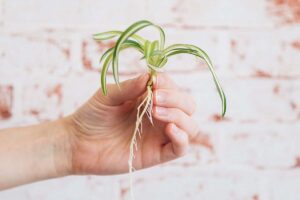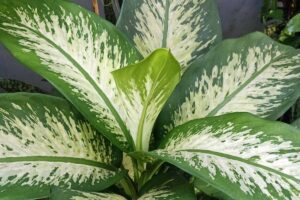Garden croton, Codiaeum variegatum, is a showy foliage species for cultivation in USDA Hardiness Zones 10 to 12 or it may be grown as a houseplant in any region.
It has vibrant leaves in assorted shapes, rich shades of green, red, and yellow, and boldly contrasting veins, splotches, and streaks.
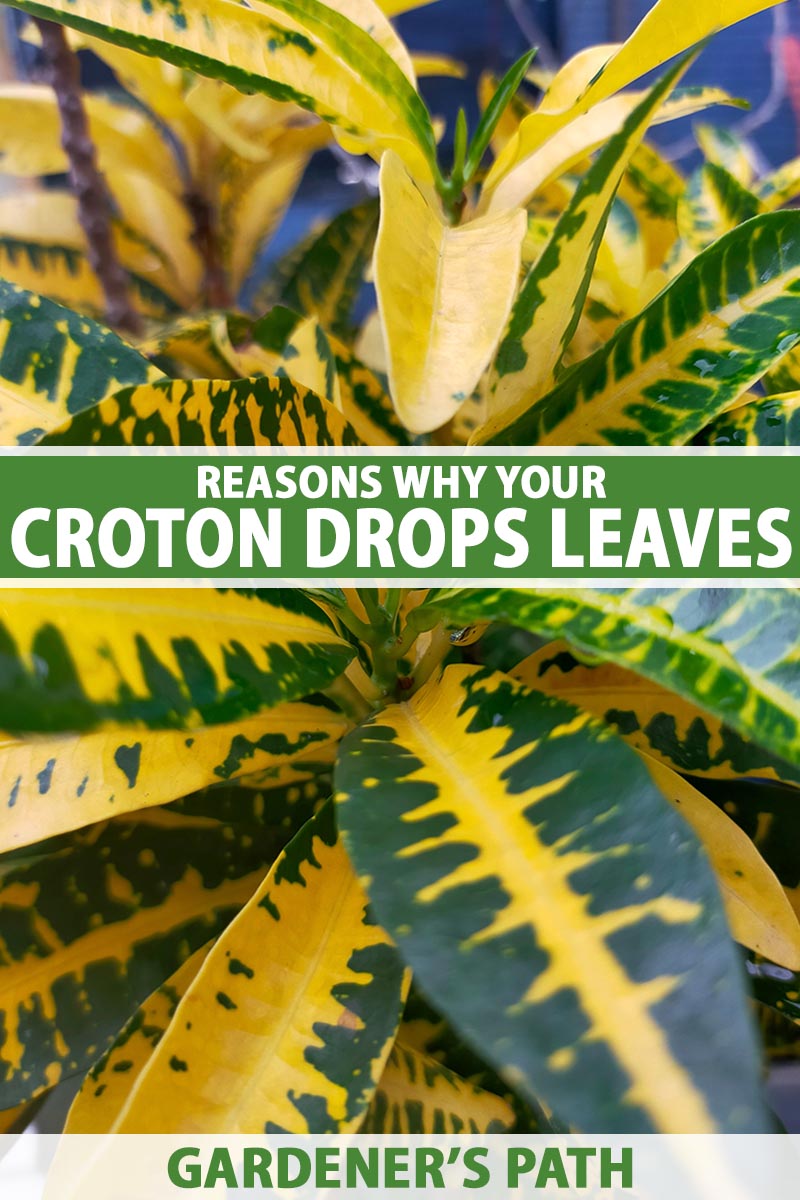
We link to vendors to help you find relevant products. If you buy from one of our links, we may earn a commission.
In the best of health, it is a floral diva aswirl in rich, jewel-like tones. But disrupt its ideal growing environment and it melts down, dramatically dropping leaf after leaf until its denuded stems make you want to avert your eyes.
In our guide to cultivating croton plants indoors, you met my daughter’s croton, Jules, temporarily in my custody, and I shared what I learned about appropriate care and feeding.
This article discusses nine reasons why garden croton may suddenly shed leaves and how to avoid them.
Here’s what we’ll cover:
9 Reasons for Garden Croton Leaf Drop
With a sensitive species like croton, one or multiple stressors may cause leaf shedding. Let’s jump right in and get this problem solved!
1. Dust
Houseplants are notoriously dusty. And when the debris on the leaves is thick enough, it can block sunlight and inhibit photosynthesis, triggering a growth slowdown and systemic stress.
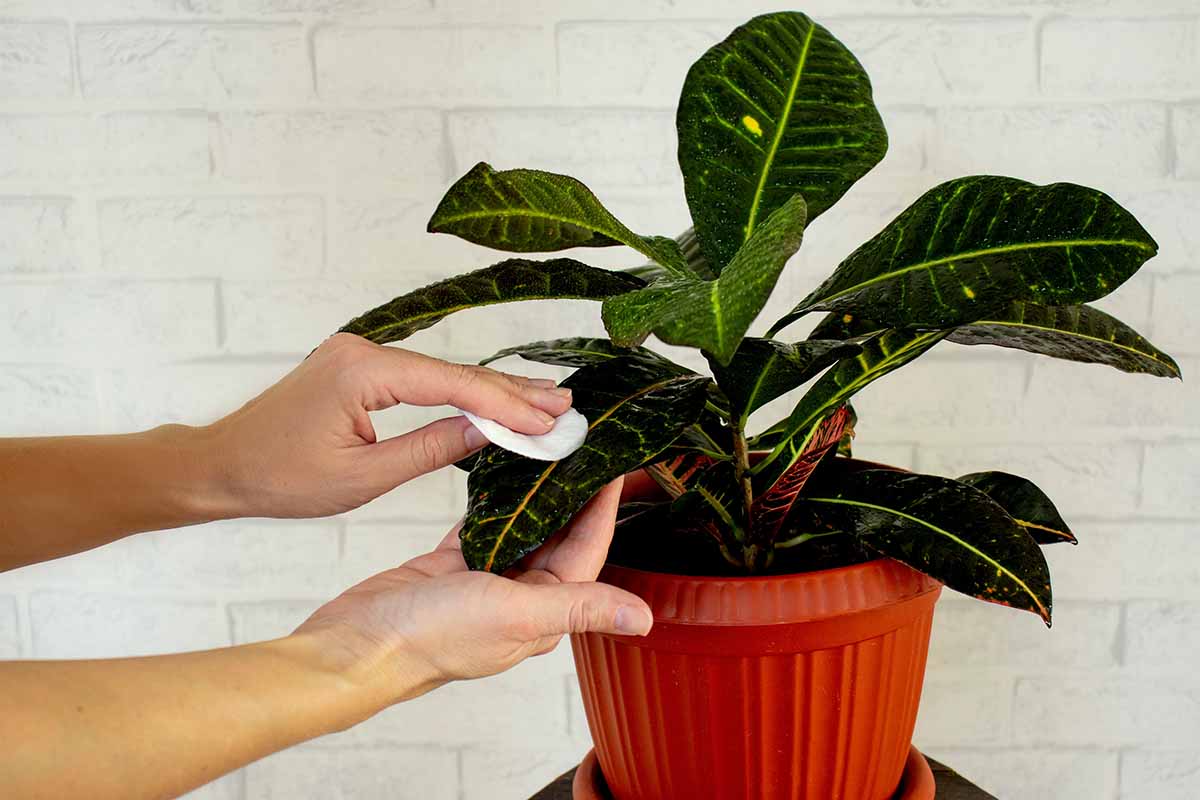
Eliminate this possible cause by wiping the foliage with a damp cloth every week or two to prevent dust accumulation.
Alternatively, you can use a leaf-shining product like the pros use in the floral trade. Miracle-Gro Leaf Shine removes dust and polishes foliage to a glossy sheen.

Miracle-Gro Leaf Shine is available via Amazon in packages of one or two eight-ounce ready-to-spray bottles.
2. Inappropriate Light
C. variegatum prefers a sunny location. However, a placement too close to a south-facing window may be so bright and hot that the color fades, and the leaves turn brown and crisp before curling and dropping off.
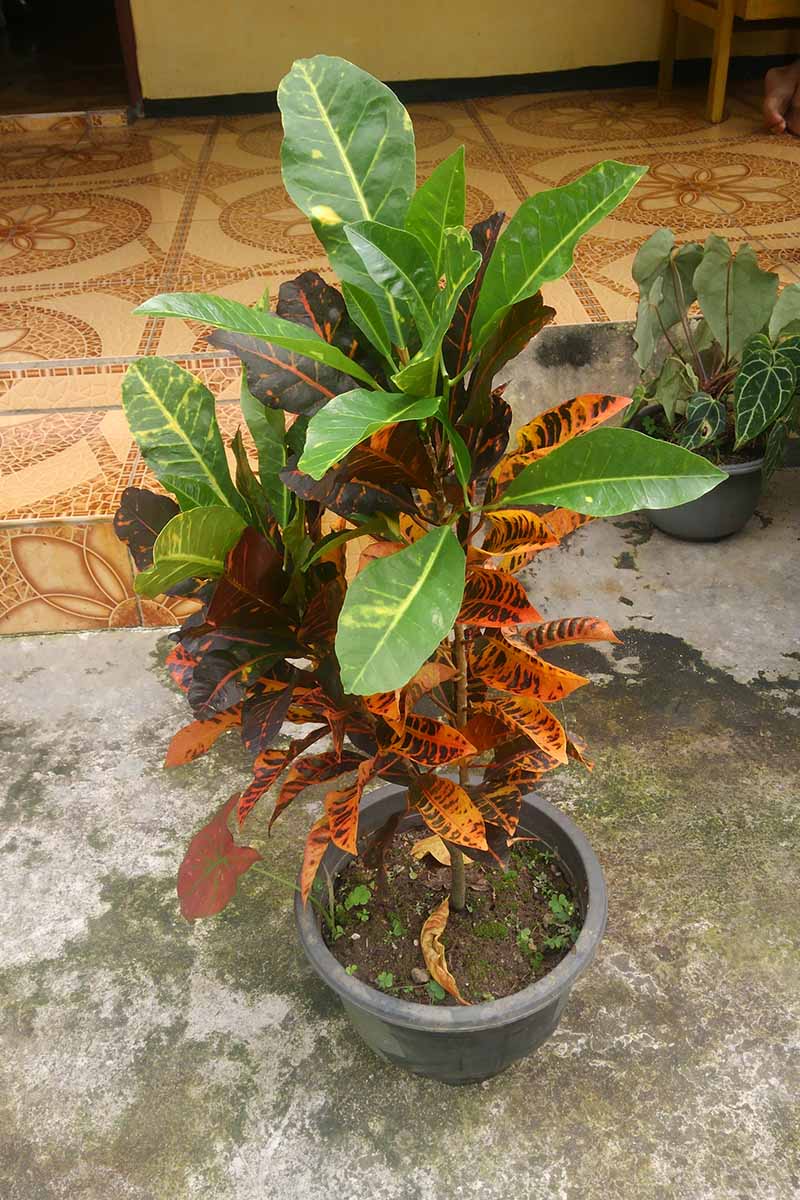
On the other hand, without enough sunlight, the foliage won’t boast a varied, bold color palette and leaves are likely to be solid green. If the dim conditions persist, leaves may fall.
Your best bet is to place the pot about three feet away from a south- or west-facing window for adequate sunlight without under- or overexposure.
This distance also provides a buffer from cold drafts around window sashes.
3. Moisture Stress
It’s time to water when the soil is dry at a depth of half an inch to an inch. You can use a moisture meter as a guide.
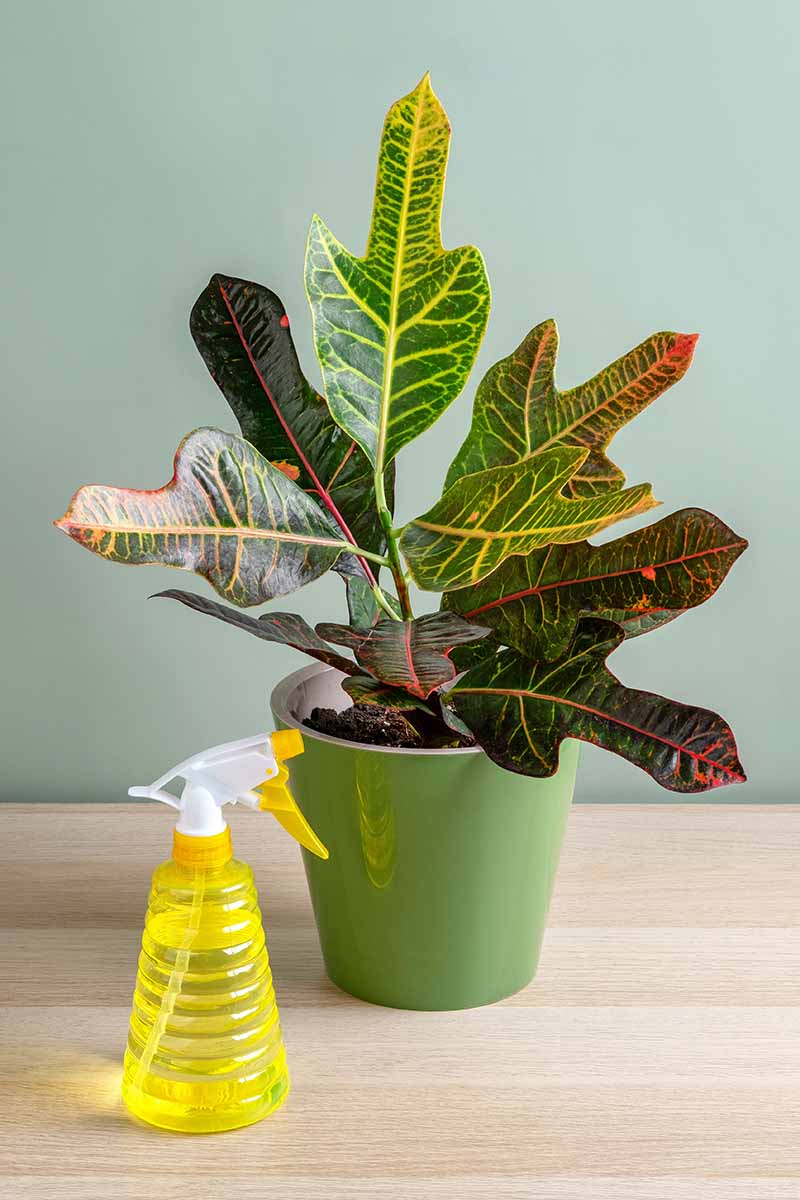
Yellow leaves and drooping may be signs of both under- and overwatering.
If a pot is too dry, the foliage may then turn brown before shriveling up and dropping off.
When conditions are too wet, the leaves may fall soon after yellowing.
Humidity is another source of moisture that comes into play. In nature, C. variegatum lives in tropical rainforests in Australia and Southeast Asia, where the humidity ranges between 77 and 88 percent.
Healthy indoor humidity is generally between 40 and 60 percent, and that’s the range in which many people, especially those with allergies, try to keep their homes.
Lightly mist the leaves daily to raise the ambient humidity or moisture around your croton.
Improper light exposure and temperature extremes may contribute to the ill effects of moisture stress. We’ll talk about temperature soon, but first let’s touch on nutrients.
4. Overfertilization
During the spring and summer growing season, it’s beneficial to fertilize monthly with a liquid houseplant food diluted to half strength.
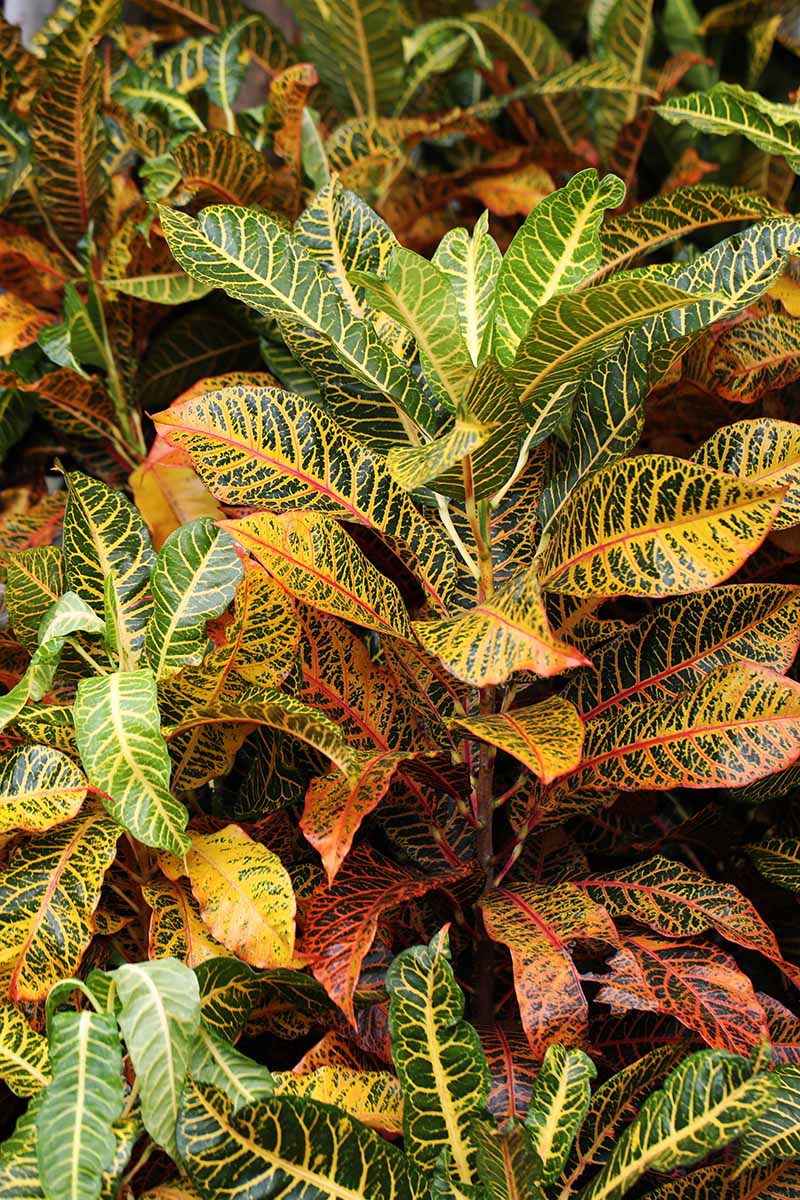
Too much fertilizer may cause a buildup of soluble salts that can cause leaves to wilt and drop.
There are also soluble salts in municipal tap water. An overabundance of minerals may appear as a white crusty coating on the soil and pot.
It’s better to err on the side of fertilizing too little than it is to risk providing too much. And if your tap water is very hard or mineral dense, use filtered or distilled water instead.
5. Pests and Disease
Indoor potted crotons are not prone to pests and pathogens, but overly dry conditions may make them vulnerable to mealybugs, scale, and spider mites.
Some pests may be vectors of diseases that may cause further stress.
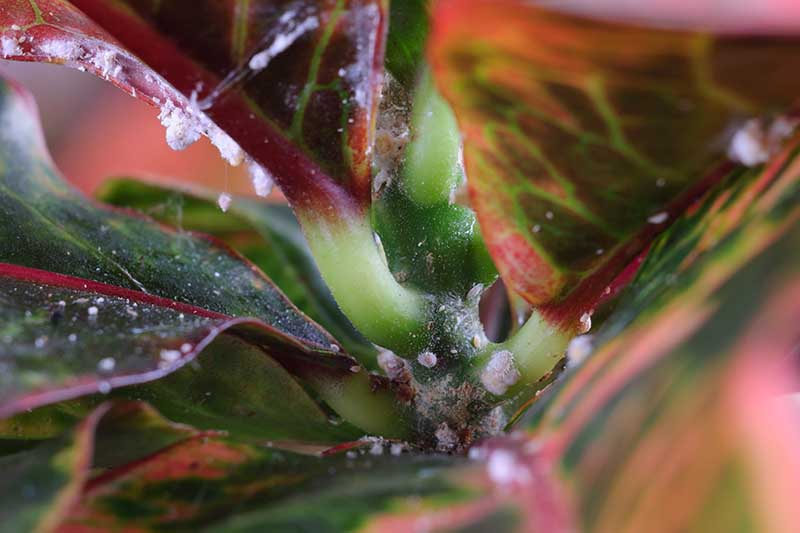
If the growing environment is overly wet, fungal conditions, like anthracnose and powdery mildew, may flourish.
Pests and disease may compound trauma caused by excessively dry or wet conditions, causing leaf discoloration, disfigurement, desiccation, and defoliation.

Earth’s Ally 3-In-1 Plant Spray for Organic Gardening treats common pests and fungal diseases and is suitable for indoor houseplant use.

Earth’s Ally 3-In-1 Plant Spray for Organic Gardening
It’s available via Amazon in eight-ounce concentrate, 24-ounce ready-to-spray, 32-ounce concentrate, and 128-ounce ready-to-spray sizes.
6. Relocation
When moving a croton, humidity, light, and temperature changes may be traumatic enough to trigger leaf shedding.
The degree of stress varies by the severity of the changes and the length of time they are endured.

Whether you are bringing a new plant home or moving an established one to a new location, there are steps you can take to ease the transition.
If the weather is warm and pleasant, you’ve already won half the battle. However, if you have to move a croton on a cold day with temperatures of 50°F or less, do the following:
Decide where you’ll put the pot in advance. Take sunlight and HVAC drafts into account.
If you are moving an established plant, water it the night before, unless it is already adequately moist. While this may seem counterintuitive because of the added weight, moisture helps insulate the roots.
If possible, choose a sunny, dry day to relocate or bring new plants home.
Make sure the heat is on in the plant’s new permanent home.
Warm up the car interior if you are traveling to a new location.
Wrap the entire pot and foliage loosely in newspaper, like a tent. Use a stapler to secure the newspaper, taking care to avoid injuring the leaves.
Place the pot away from the heater vents during the car ride.
Upon arrival, take the pot directly to its new placement.
Provided the room is warm and sunny, take off the newspaper. Otherwise, leave it on until you have a temperate setting in which to unwrap it.
7. Root Bound Pot
Another reason for defoliation may be a lack of room to grow.
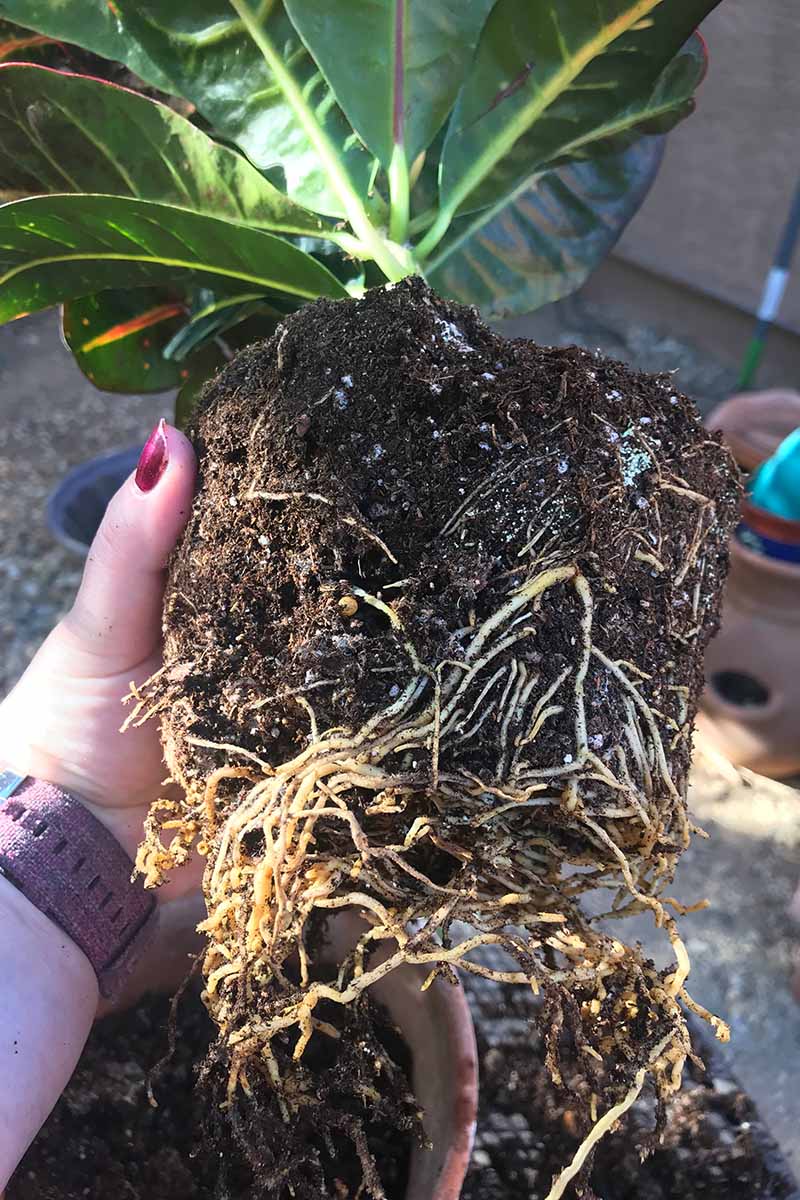
When a croton outgrows its pot, it generally becomes root bound, a condition in which the roots wind into a mass and no longer nourish the plant efficiently. The first clue is usually roots poking through the drainage hole.
The solution is to repot in a container no more than two inches wider than the current one, or one size up.
A vessel that is too large encourages more root than leaf growth, an undesirable imbalance. The excess soil around the roots can also lead to oversaturation.
Repotting is also stressful but beneficial in the long run. We’ll talk about ways to support a smooth transition shortly in the section below on transplant shock.
8. Temperature Fluctuations
The best temperature range for C. variegatum is between 60 and 85°F. When the temperature falls below 50°F, leaves wilt and drop from cold shock.
Most of us maintain our homes in this range, so when the temperature is the culprit, leaf shedding is most likely due to fluctuations.

When we decide where to put a croton, there’s more to do than finding a sunny window. We’ve got to consider HVAC air supply registers, hallway drafts, and proximity to entry doors.
Think of working directly beneath an air conditioning vent all day and going home with a stiff neck. C. variegatum would likely respond with a dramatic defoliation episode.
If you are at your wit’s end trying to find a suitable location near a window where the room temperature is consistent, consider using a grow light instead.
Consistent temperatures in croton’s comfort zone mean minimal shock with leaf retention.
9. Transplant Shock
And finally, shifting a new croton from its humdrum plastic nursery pot to a fabulous, well-draining, decorative container any floral diva would love is another cause for the letting go of leaves.
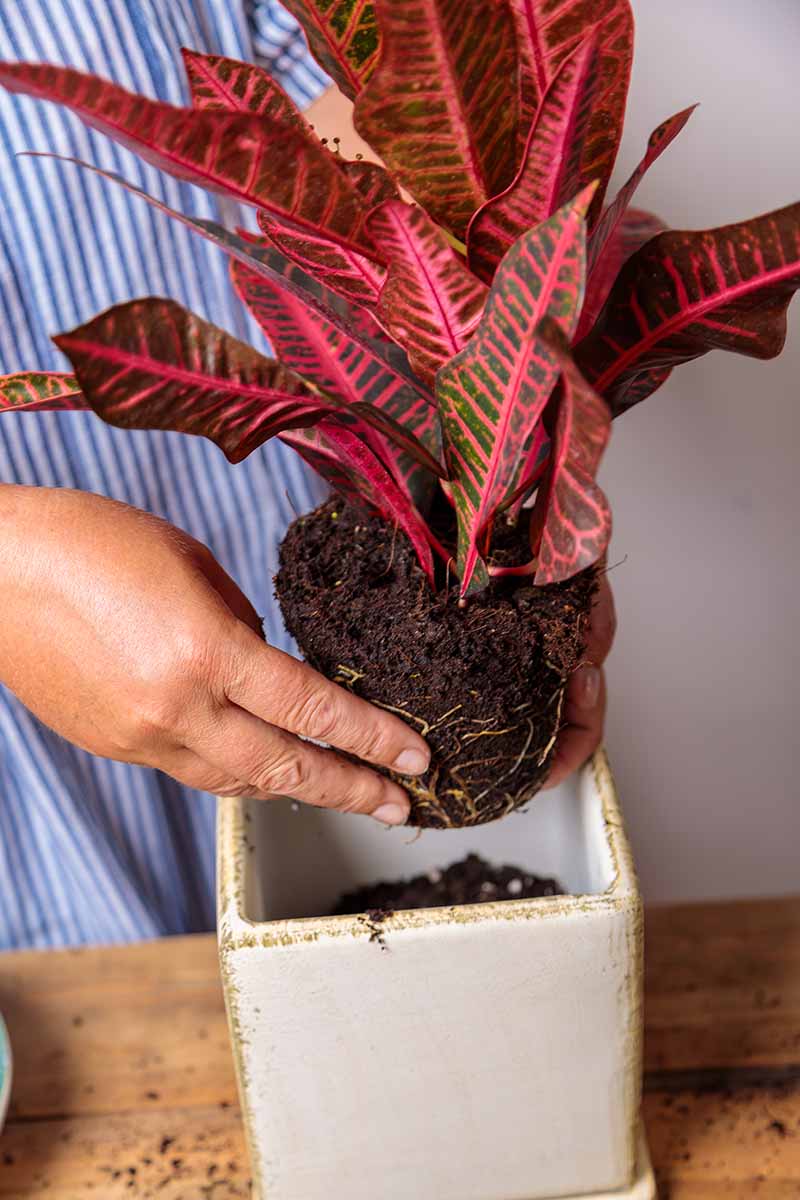
To minimize the trauma, begin by watering if the top half an inch to an inch of the soil is dry.
Then note the depth of the croton in the nursery pot so you can replicate it in the new vessel.
Choose a pot that is no more than two inches wider than the diameter of the foliage.
Unpot and set the contents of the nursery pot in the new vessel. Fill in under and around it with enough fresh potting soil to achieve the same depth as in the original container, usually no more than one inch below the pot rim to allow room for watering.
Choose a permanent placement and be patient while her highness recovers.
Robust and Resilient
Over time, C. variegatum stems become woody, and the oldest leaves at the bottom occasionally drop off.
New leaves may grow, or the stems may remain bare. This type of leaf shedding is a natural part of the aging process and not a cause for alarm.
Now that you know nine common reasons for leaves suddenly dropping off you can work to avoid them.

Remember to keep the foliage clean; provide ample sunlight; water appropriately; dilute the fertilizer; monitor for pests and disease; relocate, repot, and transplant with care; and minimize temperature fluctuations.
If your croton gets in a dither, take heart.
C. variegatum is a resilient species with a robust constitution. Because it grows slowly, you’ll need to be patient while it adapts to change or recovers from other types of disruption.
It’s just a matter of time before lavish foliage adorns the stems once more.
Do you grow garden croton? Indoors or outdoors? Have you experienced leaf drop? Please share your experience in the comments section below.
If you found this garden croton troubleshooting guide informative, we recommend the following houseplant guides next:
